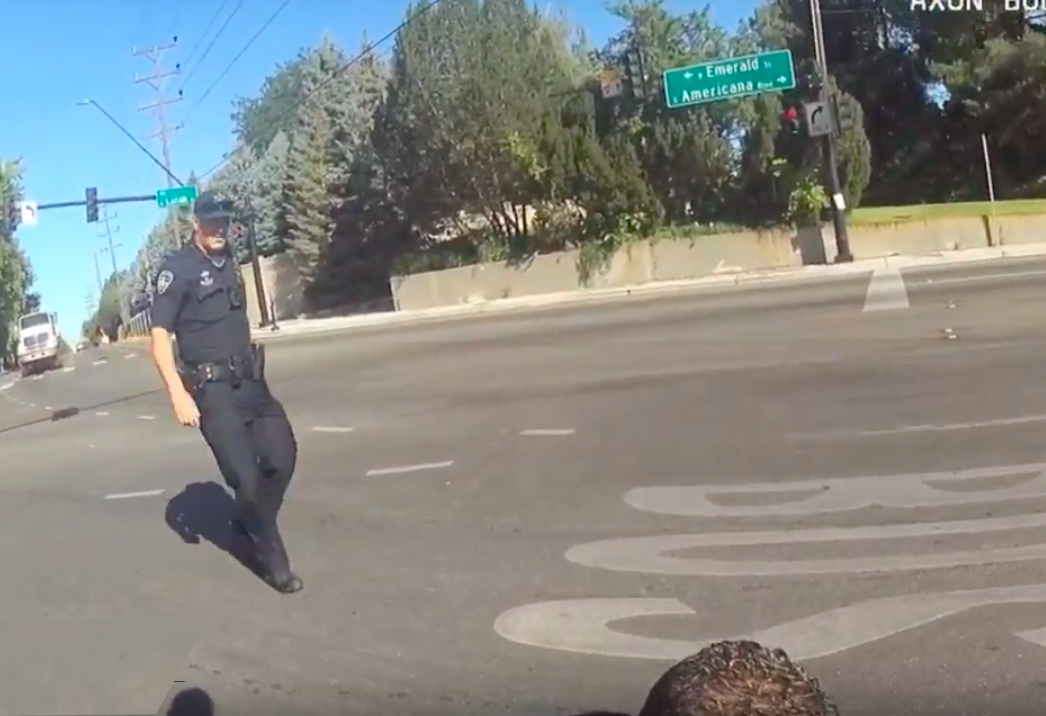Talk about adding insult to injury.
A Boise bicyclist whose ankle was shattered when she was hit from behind by a reckless driver was slapped with a $90 ticket for running a red light by a car-friendly cop in the latest example of police siding with drivers after they maim innocent, car-free victims. Cyclist Elizabeth Hilton was later found guilty of the charge — which did not even match the facts in the case.
“It’s a clear case of windshield bias,” said Kurt Hozier, the lawyer for Hilton, who last week was found guilty of running the light after challenging the ticket she received after the July crash. “We have a cop who sees things through the eyes of a driver.”
Hozier said Hilton came to a full stop at the red light at Emerald and N. Latah streets about a mile from Downtown Boise. After checking to see if it was safe, she rode straight through the intersection from Emerald, which changes its name to S. Americana Boulevard. At that point, she was hit by the front bumper of a white Dodge driven by David McDaniel.
The crash spun Hilton around and onto the hood before she fell into the bike lane on Americana — 30 feet from the site of the impact, according to Hozier.
Idaho law allows cyclists who stop at red lights to start up again as long as the coast is clear — the famed "Idaho Stop" — but police took the side of the driver, who admitted he didn’t see Hilton before hitting her — a fact Hozier said proves his guilt.
“When a driver says he didn’t see a cyclist, that’s not an excuse — that’s an admission,” Hozier said. “If he hit her anywhere outside that intersection, he is clearly at fault.”
On top of that, the ticket issued by police ignored the fact that Hilton had a right to go through the light. The summons, Hozier said, is designed for drivers of cars who go through lights, not cyclists following the rules of the road.
“She was accused of violating a statute that doesn’t apply to her,” he said, pointing out that the driver should have been cited for breaking three rules of the road.
To prove his point, Hozier created a video — which includes lines painted on the street to guide traffic through the intersection that do not appear in video taken the day of the crash by police wearing body cameras — showing how things went down and how cops got it wrong. The video provides incontrovertible evidence, but Magistrate Judge Theodore Tollefson nonetheless upheld the fine on the bicyclist, who has subsequently had two more surgeries on her leg, according to her Facebook page.
The judge's failure to give full weight to the evidence in Hozier's video won't surprise many victims of recklessness by drivers, whose testimony is often given far more credence by police. Beyond that is another fact that plays against victims: the vast majority of crash victims don't have the money, time or resources to hire a lawyer to pursue cases against drivers or create elaborate videos.
The larger problem, of course, is with police, who are themselves drivers who frequently side with the operators of 3,000-pound killing machines that have hurt or killed bicyclists or pedestrians — an epidemic sweeping America.
Earlier last month, a bicyclist in Colorado Springs received multiple summons after being hit by a truck; one in Kent, Ohio got a ticket for not keeping a safe distance when he smashed into the back of a car that just passed him; and a third got a ticket Davenport, Iowa after being hit by a car at an intersection.
Hozier said Boise cops tend to be "cyclist-aware and cyclist friendly."
“We have cops on bicyclists, so this bias toward drivers in a little unusual,” said the lawyer, who has been practicing in the Potato State for 26 years.
Hozier said he hoped the judge would reconsider his decision, which can still happen despite the initial ruling. Barring that, the lawyer intends to appeal.






